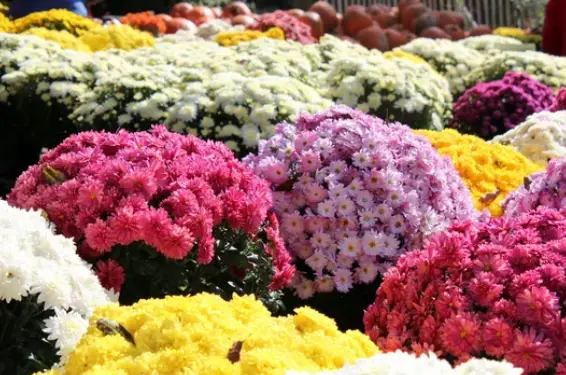Choosing Between Garden Mums and Hardy Mums for Your Garden.
Garden mums and hardy mums are two types of flowering plants that are often confused by gardeners.
While they may look similar at first glance, there are some important differences between these two types of mums that you should be aware of if you’re considering adding one of these plants to your garden.
The Difference Between Garden Mums And Hardy Mums
the differences in hardiness and care requirements, there are also some differences in the appearance of garden mums and hardy mums.
Garden mums tend to have larger and more showy flowers, with petals that can be flat or rounded.
They are also available in a wider range of colors, including yellow, orange, red, purple, and white.
First, let’s take a look at garden mums.
Hardy mums, on the other hand, tend to have smaller and more delicate-looking flowers.
They are often found in shades of yellow, orange, and red, although white and purple varieties are also available. Hardy mums can be grown as small shrubs or can be trained to grow as climbing plants.
Another important difference between garden mums and hardy mums is the way they are propagated.
Garden mums are typically propagated by rooting stem cuttings, while hardy mums can be propagated by rooting stem cuttings or by dividing the roots of mature plants.
Garden Mums

These plants, also known as florist mums, are popular choices for fall decorations because of their bright and colorful flowers.
They are typically grown in pots and are often sold in supermarkets and garden centers during the autumn months.
One of the key characteristics of garden mums is that they are not cold hardy.
This means that they are not able to withstand freezing temperatures and will need to be brought indoors or protected in some way during the winter months.
If you live in an area with harsh winters, it’s unlikely that your garden mums will survive from one season to the next.
Hardy Mums

Hardy mums (also known as “chrysanthemums”) are much more resilient and can withstand colder temperatures.
These plants are native to Asia and have been cultivated for centuries for their beautiful flowers.
Hardy mums come in a wide range of colors and can be found in both single and double bloom varieties.
One of the main advantages of hardy mums is that they are much easier to care for than garden mums.
They are generally more drought-tolerant and can survive with less watering than garden mums.
They also have a longer blooming season, with some varieties flowering from early summer all the way through to late fall.
If you’re considering adding mums to your garden, it’s important to choose the right type for your specific climate and growing conditions.
If you live in an area with mild winters, garden mums may be a good choice for you.
However, if you’re in an area with cold winters, you’ll want to opt for hardy mums instead.
When planting mums, it’s important to choose a location that gets at least six hours of sunlight each day.
They also prefer well-draining soil and should be fertilized every two to four weeks during the growing season.
Water your mums regularly, but be sure to avoid overwatering, as this can lead to root rot.
Garden Mums And Hardy Mums Care
In terms of care and maintenance, both garden mums and hardy mums require similar care.
They should be trimmed back in the spring to encourage new growth and to remove any damaged or dead branches.
It’s also a good idea to mulch around the base of your mums to help retain moisture and keep the soil cool.
One of the most common questions gardeners have about mums is whether they will come back year after year.
As mentioned earlier, garden mums are not cold hardy and will not survive the winter in most cases.
However, hardy mums are much more resilient and will often come back year after year, even in colder climates.
If you’re interested in propagating your own mums, it’s important to choose the right method for the type of mum you have.
Garden mums are generally easier to propagate from stem cuttings, while hardy mums can be propagated either way. Just be sure to follow the proper techniques to ensure a successful result.
Garden Mums And Hardy Mums Pests
In terms of pests and diseases, both garden mums and hardy mums are relatively resistant to most problems.
However, they can be susceptible to fungal diseases such as powdery mildew and botrytis blight, as well as insect pests like aphids and spider mites.
If you do notice any problems with your mums, it’s important to take action quickly to prevent the problem from spreading.
This may involve removing infected plants, applying a fungicide or insecticide, or taking other control measures as needed.
Final Thoughts
So, if you’re trying to decide between garden mums and hardy mums for your garden, it really comes down to your specific needs and growing conditions.
Both types of mums can add a splash of color to your garden and can be a great addition to any landscape. Just be sure to choose the right type for your climate and give your mums the care and attention they need to thrive.




